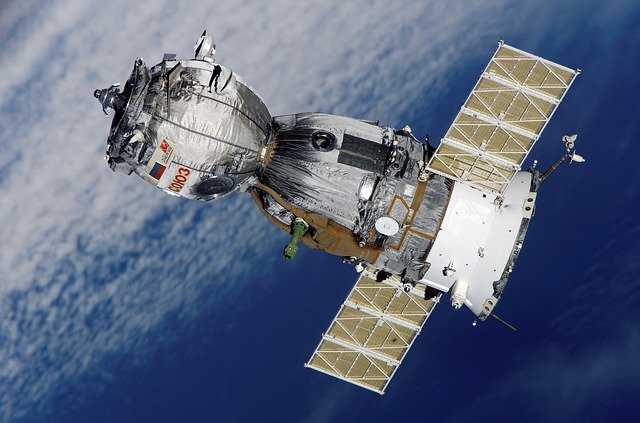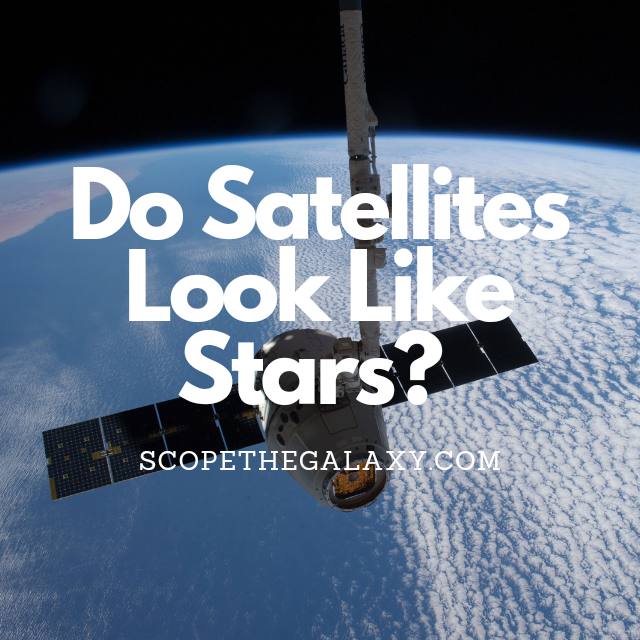*This post may contain affiliate links. This means we may make a commission if you purchase an item using one of our links*
Have you ever looked up at the night sky and wondered if what you’re seeing is a satellite or a star? You’re not alone. Satellites are often mistaken for stars because they appear to move slowly across the night sky. They can even be seen during the day, though they are much harder to spot due to their small size and distance from Earth.
While satellites may look like stars, some key differences make them easier to identify. Continue reading to explore these differentiating factors and learn how to tell the difference between the two.
How Do Satellites Shine In Space?
Table of Contents

A satellite is an artificial object that is launched into space and orbits around a planet or other celestial body. It can be used for various purposes, from providing communication services to collecting data and taking pictures of the Earth.
Satellites have become an integral part of modern life, as they provide access to information, entertainment, and communication services that would otherwise be unavailable.
Solar power is perfect for satellites as they are close enough to the Sun to harness its energy as a power source. Solar power makes satellites self-sufficient, meaning they can operate without relying on external energy sources. And it provides an ongoing energy source, so there is no need to replace batteries as they would be in other spacecraft.
Furthermore, solar panels are easy to install on a satellite, making them the perfect choice for powering space missions.
Still, the further a satellite travels from the Sun, the weaker this energy source becomes. That’s why NASA’s Juno spacecraft, which is traveling to Jupiter, possesses solar panels that are 30 feet long. And it’s these solar panels that enable satellites to shine in space.
While solar panels are designed to absorb light, they also reflect it when the light travels perpendicular to the glass. This is why you won’t see satellites at night. They shine when the Sun hits them at just the right angle; this happens for a few hours before sunrise and a few hours after sunset.
Still, there are certain latitudes where these shiny spacecraft can be viewed all night long during the summer solstice, which makes differentiating between them and a star that little bit more challenging.
Why Do Satellites Look Like Stars?

If you were to look at a satellite and a star up close, you’d see that they are nothing alike. Satellites are artificial spacecraft ranging from 10 cm cubes to six-ton buses. This may sound big, but it’s nothing compared to stellar objects.
The average star is similar to our Sun, with a diameter of around a million kilometers and a surface temperature between 5,000 and 12,000 degrees Celsius! We certainly wouldn’t want one of these orbiting the Earth in place of one of our satellites, or it would fry the planet.
So how can they look so similar?
It’s because the stars we see in the night sky are millions of miles away, while many satellites are in low to medium orbits of the Earth. Think of it like this – the Sun is around 400 times larger than the moon, but they appear the same size in our sky because the Sun is roughly 400 times further away.
When we see stars in the night sky, we cannot appreciate the size and magnitude of these stellar giants as they appear as nothing more than bright dots.
How Can You Tell If It’s A Star Or A Satellite?
Have you ever looked at the night sky and wondered if you saw a star or a satellite? It can be challenging to tell them apart, but some key differences can help you identify which one is which.
In general, stars are visible all night, whereas satellites only appear at sunrise and sunset. This is because satellites orbit the Earth in an elliptical pattern, meaning they are only visible when they are closest to the horizon. On the other hand, stars remain in fixed positions in relation to each other throughout the night.
Stars appear to move slowly across the sky, while satellites appear to travel far more quickly as they are closer to Earth. Stars will remain fixed in the sky while satellites will move across it in a predictable pattern.
Additionally, stars will often “twinkle,” which can help differentiate them from satellites. Twinkling is caused by turbulence in the Earth’s atmosphere, which causes light from stars to bend and scatter in random directions. In contrast, the light from a satellite should remain constant. (If you see a flashing or pulsing light from a fast-moving object, it’s more likely to be a plane than a satellite).
Summary
If you placed a satellite next to a star, you would see that the two look nothing alike. One is a gigantic ball of flaming gases, and the other is a comparatively small man-made spacecraft covered in solar panels for energy generation.
Still, their relative distances in the night sky can make them appear strikingly similar to us from our position on Earth. But by looking at the consistency of the light and the speed of movement, you should be able to identify which object you are looking at.
References
Can we see satellites at night? | The Weather Guys (wisc.edu)
Do satellites shine like stars? – Quora
What Powers a Spacecraft? | NASA Space Place – NASA Science for Kids
Why Do Stars Twinkle And Planets Do Not? (byjus.com)

